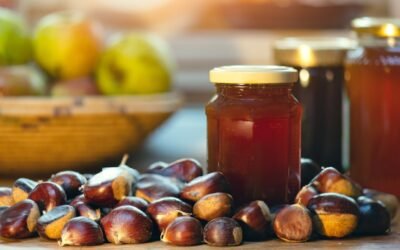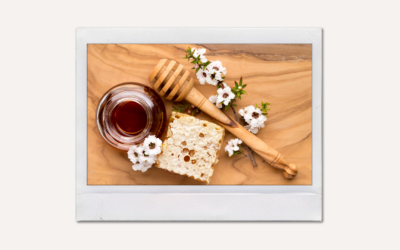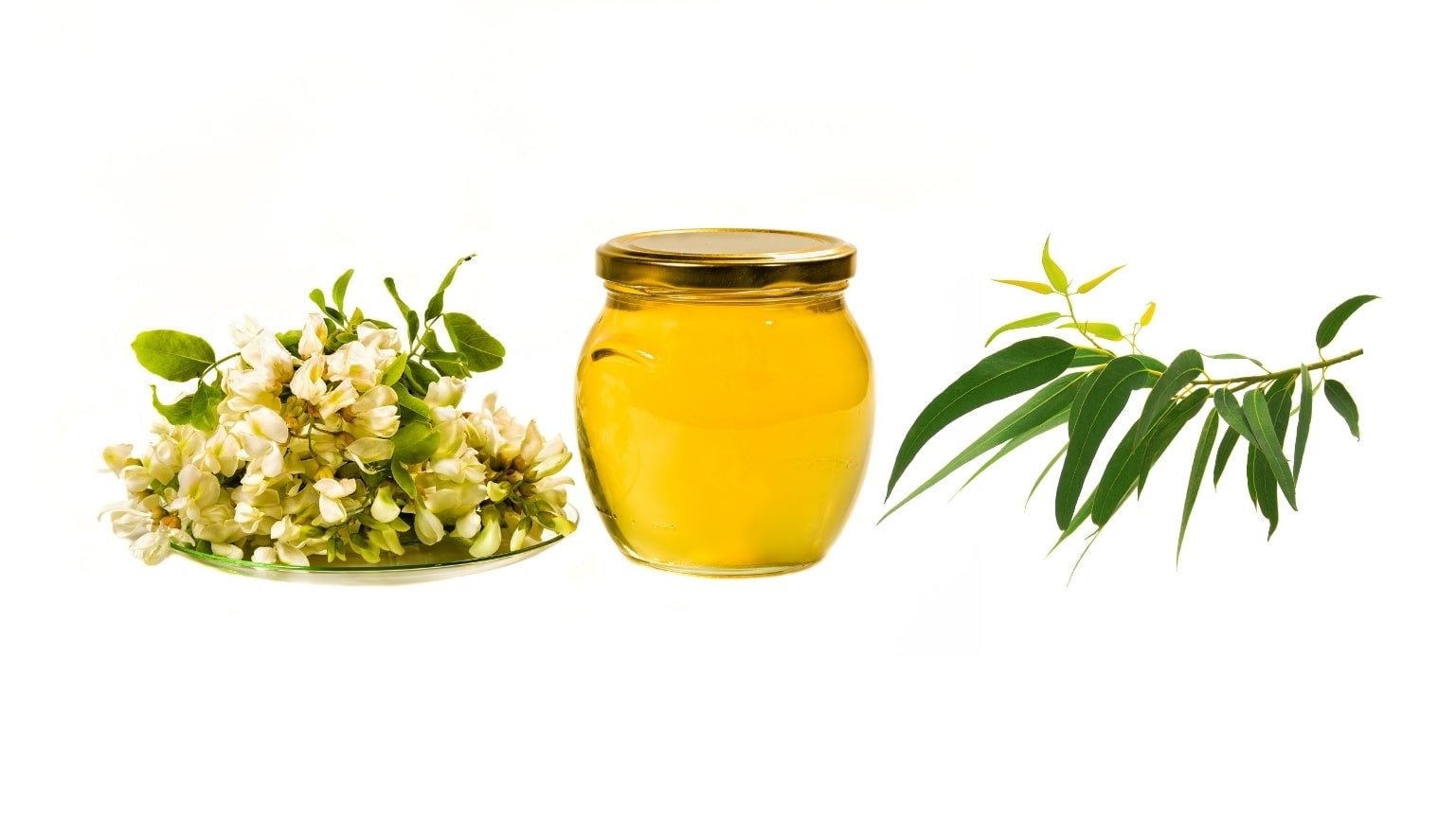
Honey is one of nature’s most beloved gifts, treasured for its unique flavors, nutritional benefits, and versatile uses. Among the vast varieties of honey available worldwide, Acacia honey and Eucalyptus honey stand out for their distinctive qualities and rich histories. If you’re curious about which honey suits your palate or health needs best, understanding the nuances between Acacia and Eucalyptus honey can guide your choice.
In this article, we will explore the botanical origins, flavor profiles, nutritional benefits, and ideal uses of these two popular honey types, helping you appreciate their differences and decide which honey deserves a spot in your pantry.
Where Does the Honey Come From?
Acacia Honey Botanical Origins
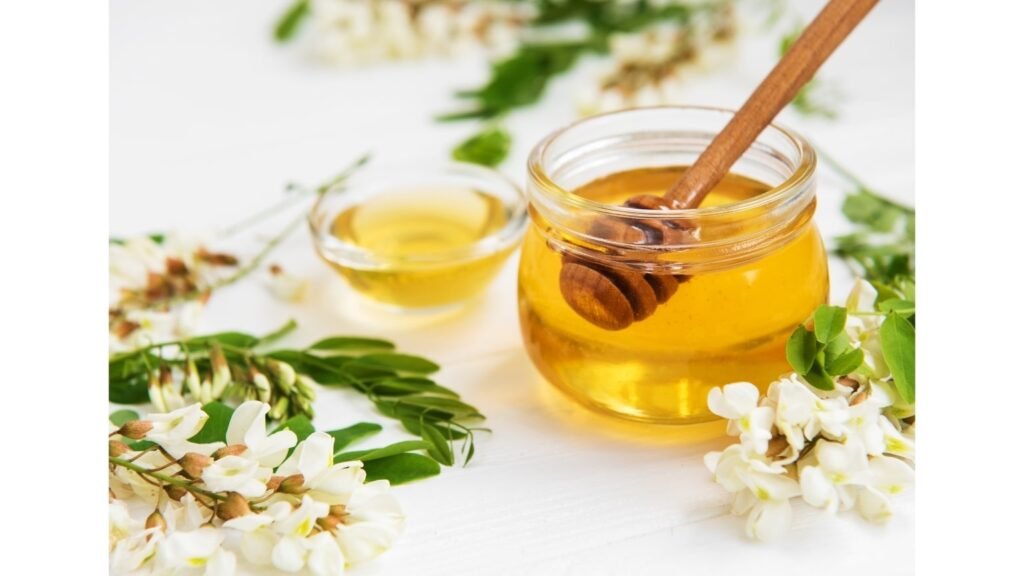
Acacia honey is derived primarily from the nectar of the black locust tree (Robinia pseudoacacia), commonly called Acacia, which is native to Eastern Europe and North America. This tree blossoms in late spring and early summer, producing delicate white or pale pink flowers that bees eagerly forage.
Because of the purity of nectar and the specific flowering period, Acacia honey tends to be very light in color and flavor. It is often harvested in regions with plentiful Acacia growth, including parts of Europe (especially Hungary, Romania, and France), the United States, and China.
Botanical Origins of Eucalyptus Honey
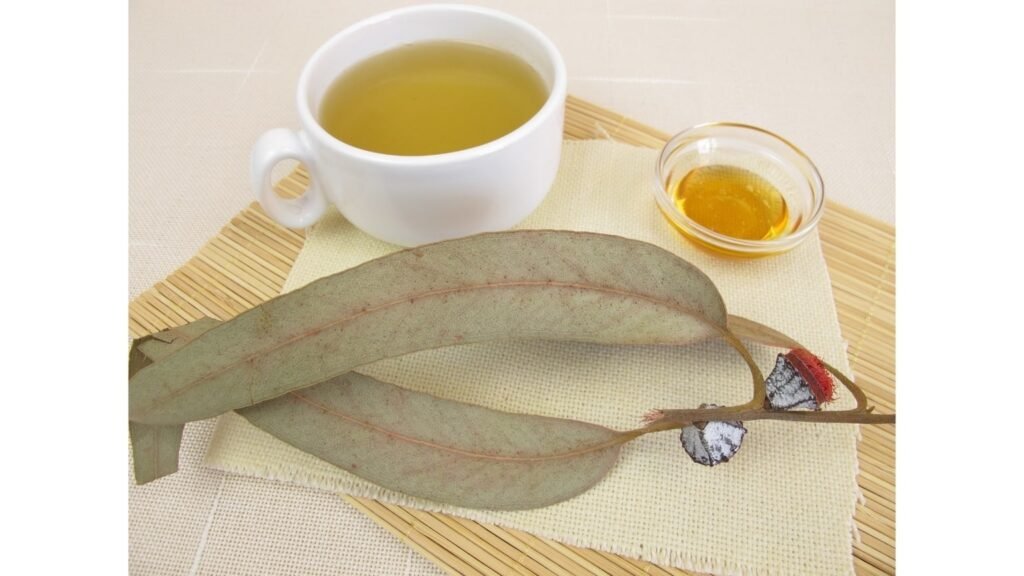
Eucalyptus honey, on the other hand, is made from the nectar of various Eucalyptus tree species, native to Australia but now grown in many subtropical and tropical regions worldwide. Eucalyptus trees flower at different times of the year depending on the species and location, offering bees a rich and often continuous source of nectar.
There are over 700 species of Eucalyptus, and the honey produced can vary depending on which species the bees visit, but it usually carries characteristic earthy, herbal, and slightly medicinal notes. Eucalyptus honey is commonly produced in Australia, South America, South Africa, and parts of the Mediterranean.
Appearance and Flavor Profiles of Acacia Honey Vs Eucalyptus Honey
Acacia Honey Characteristics
- Color: Pale, almost transparent with a slight golden or amber hue.
- Texture: Very smooth and liquid, tends to remain liquid for a long time due to its high fructose content.
- Flavor: Mild, sweet, and delicate with floral undertones; it is not overpowering, making it a favorite for people who prefer subtle honey flavors.
- Aroma: Light and floral with a gentle sweetness.
Because of its mildness, Acacia honey blends well with teas, yogurt, and desserts without overpowering other flavors.
Eucalyptus Honey Characteristics
- Color: Ranges from medium amber to dark brown, sometimes with a reddish tint.
- Texture: Slightly thicker than Acacia honey but still pourable.
- Flavor: Stronger and more robust, with herbal, woody, and slightly menthol-like or medicinal undertones. It can have a faintly spicy or smoky edge.
- Aroma: Earthy, herbal, and sometimes reminiscent of the Eucalyptus leaves themselves.
Eucalyptus honey’s bold flavor makes it excellent for savory dishes, marinades, or as a natural remedy where a stronger taste is desirable.
Nutritional and Health Benefits: Which Honey Packs More Punch?
Both Acacia and Eucalyptus honey are rich in natural sugars, enzymes, vitamins, minerals, and antioxidants, but their profiles differ slightly due to the nectar source.
Acacia Honey Benefits
Acacia honey has one of the highest fructose levels among honeys, which contributes to its slower crystallization and sweeter taste.
Thanks to its fructose content, Acacia honey has a relatively low glycemic index, making it a preferred sweetener for those monitoring blood sugar levels (though it should still be consumed in moderation).
It also contains flavonoids and phenolic acids, which help neutralize free radicals and may reduce inflammation.
Acacia honey is often recommended for soothing digestive issues like gastritis or acid reflux due to its mildness and anti-inflammatory properties.
Eucalyptus Honey Benefits
Eucalyptus honey is renowned for its antimicrobial properties, thanks to compounds such as hydrogen peroxide and methylglyoxal (depending on the species). This makes it useful in wound healing and fighting infections.
Traditionally, Eucalyptus honey has been used as a natural remedy for coughs, colds, and bronchial conditions. Its menthol-like aroma and compounds may help soothe sore throats and open airways.
It often contains higher levels of minerals like potassium, calcium, and magnesium compared to lighter honeys.
Some studies suggest Eucalyptus honey exhibits higher antioxidant activity than lighter honeys due to its darker color and phytochemical content.
Culinary Uses: When to Choose Acacia or Eucalyptus Honey?
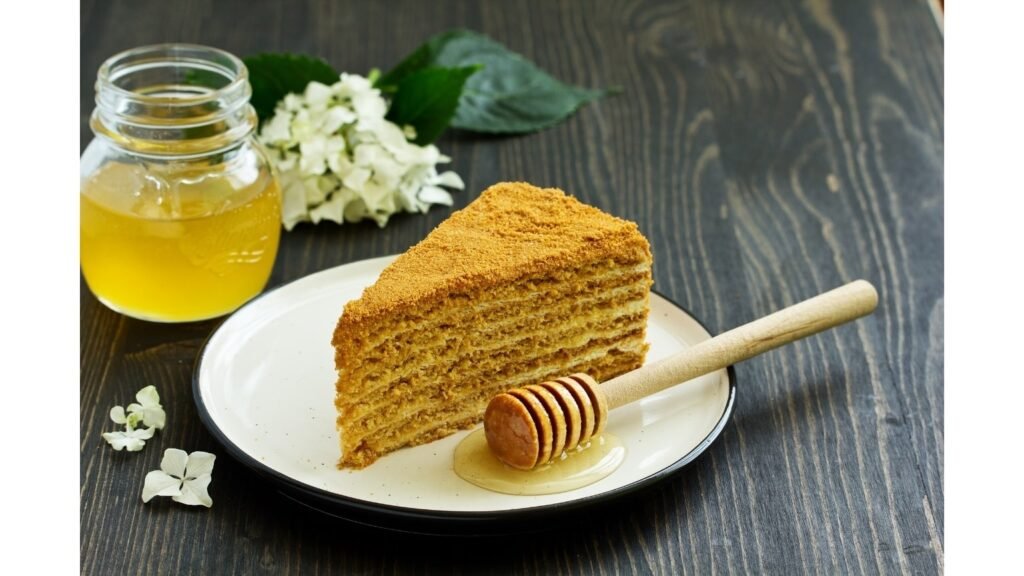
Using Acacia Honey
Thanks to its light and subtle flavor, Acacia honey is incredibly versatile, below are uses for Acacia Honey:
- Sweetening beverages such as tea, lemonade, or cocktails without altering their flavor.
- Drizzling over cereals, yogurt, or fresh fruit.
- Baking delicate pastries or glazing desserts where a mild sweetness is preferred.
- Mixing into salad dressings or light sauces.
Its liquid consistency also makes it easy to measure and incorporate in recipes.
Eucalyptus Honey Uses
Eucalyptus honey’s boldness lends itself to different culinary applications:
- Adding depth to marinades for meats or vegetables, especially grilled or roasted dishes.
- Stirring into herbal teas or hot water with lemon for a soothing throat remedy.
- Using as a glaze for stronger-flavored baked goods like gingerbread or spiced cakes.
- Pairing with cheese, especially sharp or creamy varieties, to balance flavors.
Eucalyptus honey’s unique taste can complement savory and medicinal flavors in cooking and natural health remedies.
Storage and Shelf Life Comparison
Both honeys have excellent shelf lives due to their natural preservatives, but they behave differently over time:
Acacia Honey: Because of its high fructose, it resists crystallization for much longer, remaining clear and liquid for months or even years if stored properly.
Eucalyptus Honey: May crystallize faster due to its composition, but this does not affect quality. Simply warm gently to return it to a liquid state.
Store both honeys in a cool, dry place away from direct sunlight to maintain freshness.
Which Honey Is Right for You?
Choosing between Acacia and Eucalyptus honey largely depends on your taste preferences, health goals, and intended use.
Choose Acacia Honey if you want:
- A mild, light-flavored honey
- A natural sweetener that won’t overpower dishes
- A low glycemic option for occasional use
- A honey that stays liquid longer for easy pouring
Choose Eucalyptus Honey if you want:
- A robust, earthy, herbal honey with medicinal qualities
- A natural remedy for respiratory issues and sore throats
- A flavorful ingredient for savory dishes and spiced desserts
- A honey rich in antioxidants and minerals
Simple Recipes Featuring Acacia and Eucalyptus Honey

Acacia Honey and Lemon Energy Drink
Ingredients:
- 1 cup warm water
- 1 tablespoon Acacia honey
- Juice of 1 lemon
- Fresh mint leaves (optional)
Instructions:
- Stir the Acacia honey into warm water until dissolved.
- Add lemon juice and garnish with mint leaves.
- Drink in the morning to hydrate and energize naturally.
Eucalyptus Honey Ginger Tea
Ingredients:
- 1 cup boiling water
- 1 tablespoon Eucalyptus honey
- 1 teaspoon grated fresh ginger
- 1 slice of lemon
Instructions:
- Steep the grated ginger in boiling water for 5 minutes.
- Strain into a cup, add Eucalyptus honey and lemon slice.
- Sip slowly to soothe throat and support respiratory health.
Acacia Honey Glazed Roasted Vegetables
Ingredients:
- 3 cups mixed vegetables (carrots, bell peppers, zucchini)
- 2 tablespoons olive oil
- 1 tablespoon Acacia honey
- Salt and pepper to taste
- Fresh thyme or rosemary (optional)
Instructions:
- Preheat oven to 400°F (200°C).
- Toss vegetables with olive oil, salt, pepper, and herbs.
- Roast for 20 minutes, then drizzle Acacia honey over vegetables and roast for another 5-10 minutes.
- Serve warm as a sweet-savory side dish.
Eucalyptus Honey Mustard Chicken
Ingredients:
- 4 chicken breasts
- 2 tablespoons Dijon mustard
- 2 tablespoons Eucalyptus honey
- 1 tablespoon olive oil
- 1 clove garlic, minced
- Salt and pepper
Instructions:
- Preheat oven to 375°F (190°C).
- Mix mustard, honey, olive oil, and garlic in a bowl.
- Season chicken with salt and pepper, then brush the honey-mustard mixture over the breasts.
- Bake for 25-30 minutes until cooked through.
- Serve with steamed rice or roasted potatoes.
Final Tips for Enjoying Acacia and Eucalyptus Honey
Both honeys are natural sugars, so enjoy them in moderation to reap benefits without overdoing calories or sugar intake.
Always source raw, pure honey to ensure you get authentic flavor and maximum health benefits.
Store honey well in a sealed container at room temperature, away from sunlight and moisture.
Use Acacia honey when you want mild sweetness that doesn’t interfere with other flavors, and Eucalyptus honey when you want bold herbal notes or therapeutic effects.
Conclusion
Both Acacia and Eucalyptus honeys bring unique gifts to the table—whether it’s the delicate sweetness and smoothness of Acacia or the bold, healing properties of Eucalyptus. Incorporating either honey into your diet can add flavor and health benefits, so consider your needs and experiment with both to discover your favorite.
Whether you drizzle Acacia honey on your morning toast or soothe a cough with a spoonful of Eucalyptus honey, you’re enjoying nature’s sweet, golden goodness in one of its most authentic forms.

